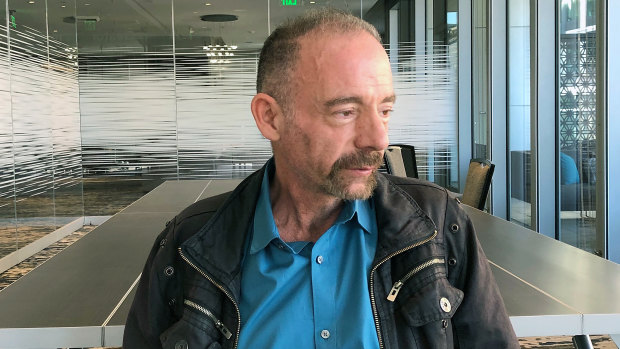This was published 5 years ago
Opinion
Physicians cured a man of HIV, but that's not our best shot at fighting AIDS
By Anthony Fauci
When I began caring for people with HIV in the early 1980s, the disease was usually a death sentence. We had no drugs to fight the virus, and most of our patients died within months to a year. It wasn't until 1996 that a combination of drugs known as the "anti-HIV cocktail" was able to suppress the virus and improve patients' health. So it was noteworthy when at a major AIDS meeting in Seattle this month, researchers made the announcement: For the second time in history, a man had been cured of HIV.
Many considered this a breakthrough. But it is important to put this case and its predecessor into perspective. This cure is an exceedingly risky procedure, and while developing it into a safe and scalable treatment is a laudable goal, we must focus on using the tools we already have to end the HIV/AIDS epidemic.

Timothy Ray Brown, also known as the "Berlin patient", was the first person to be cured of HIV infection. Credit: AP
The cured man, known as the "London patient," also had Hodgkin's lymphoma that was unresponsive to chemotherapy. He underwent a stem cell transplantation for his cancer from a donor whom physicians selected for a rare genetic mutation of a cellular receptor called CCR5. This receptor normally allows HIV to bind to certain cells and infect the body - but people with the mutation are resistant to infection with HIV. The hope was that the transplant would cure the London patient's lymphoma - and his HIV.
The procedure seems to have succeeded on both accounts. The patient's lymphoma is in remission and likely cured; his HIV infection is in prolonged remission or possibly cured, meaning the virus is no longer present or able to replicate in him and anti-HIV therapy is no longer required. The London patient's predecessor, the "Berlin patient," has been leukemia-free in the 12 years since his CCR5 transplant, and HIV can no longer be found in his body.
For both these men, the cure means no more daily anti-HIV medication. Since the 1996 cocktail, more potent, less toxic anti-HIV drugs have been developed such that a person with HIV can now take a single pill once a day. People taking these medications can expect a nearly normal life expectancy and, importantly, do not transmit the virus to their sexual partners.
Nonetheless, people with HIV must take these drugs for the rest of their lives, as a diabetic would insulin. A cure would alleviate the need for daily medication and reduce the huge economic burden of providing lifelong treatment to tens of millions of people living with HIV around the world.
The Berlin and London patients provide proof of concept that manipulation of the CCR5 receptor could cure HIV. However, the transplants in these particular cases are risky: Patients are prone to life-threatening complications, including infections associated with the immune suppression required for the procedure. The Berlin patient almost died, and the London patient suffered serious infections.
If a person with HIV is living healthily without other medical issues on a single daily anti-HIV pill, is it worth the significant risk of complications or death just to avoid taking the drug? The importance of the transplants for the Berlin and London patients is not the potential for widespread use; it is most valuable as a road map for further research. It may be possible to design methods of modifying or removing patients' CCR5 receptors that are low-risk, scalable and relatively inexpensive. Groundbreaking gene editing that allows the modification of CCR5 is a promising tool for such research.
But a more immediate issue is the gap in providing proven, lifesaving anti-HIV drugs to people who need them. About 37 million people live with HIV globally, including 1.1 million in the United States. About 22 million people take anti-HIV drugs; 15 million don't. Additionally, one daily pill containing two anti-HIV drugs given as pre-exposure prophylaxis (PrEP) to uninfected people at high risk of acquiring HIV reduces their risk of infection by more than 95 percent.
Therefore, if we could identify almost all people with HIV infection and get them on therapy, as well as provide PrEP to a high percentage of people at risk, we could end the HIV/AIDS epidemic.
The Berlin and London patients give important insights for HIV researchers, and a cure for HIV is an aspiration we continue to pursue. But the end of the epidemic - the reduction of new HIV infections and HIV-related deaths to very low levels - is within our reach even without a cure. It is our ethical duty to use the tools we have already to stop this disease. Because that would be a real breakthrough.
Anthony Fauci is director of the National Institute of Allergy and Infectious Diseases at the National Institutes of Health.
The Washington Post